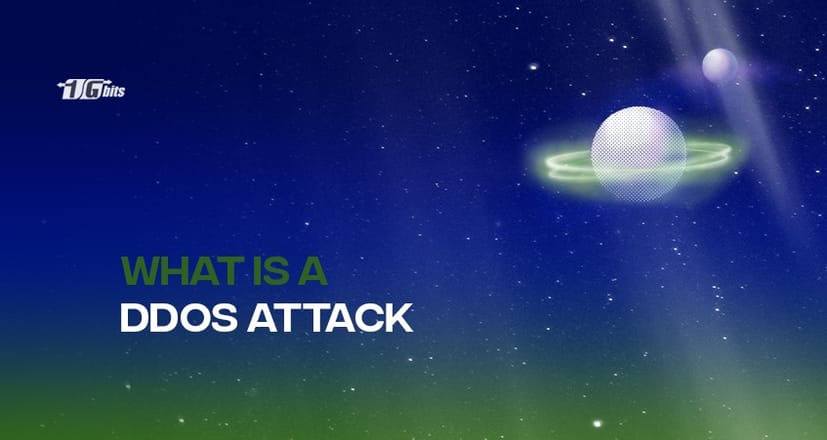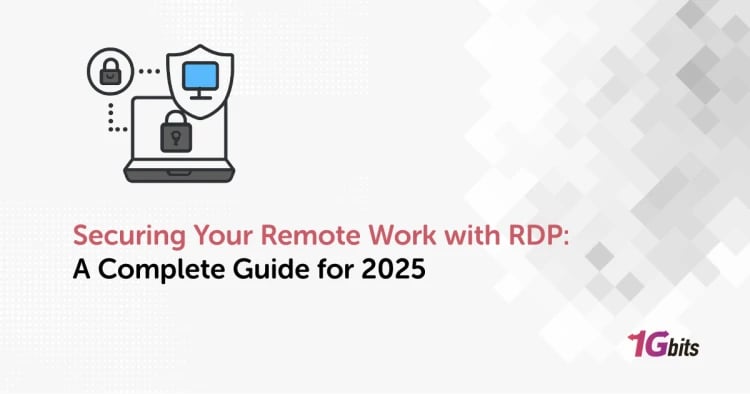What is a DDOS attack? What does DDOS mean? A DDoS attack, known as a distributed denial of service attack, is a malicious attack that is attempted to disrupt regular traffic of a server targeted specifically, a service or a network by flooding the target or the surrounding infrastructure with internet traffic.
Such attacks achieve effectiveness by utilising several compromised systems in the way of sources of attack traffic. The exploited machines can include devices like computers and other resources.
A DDoS attack is like an unexpected traffic jam that clogs up the highway, stopping the regular traffic from reaching its destination.
Unlike other cyberattacks, distributed denial of service attacks is not attempted to breach security. Instead, they aim to make the website and server unreachable to legit users. DDoS can also be used as a smokescreen for other activities that take down the security appliances and breach the target's permitted security.
A successful DDoS is highly noticeable and impacts the entire user base online. Because of this reason, DDoS is considered a popular weapon of choice for hackers, cyber vandals, or anyone looking to make a point.
Disturbed Denial of Service attacks either come in short bursts or as repetitive assaults. Either way, they impact a lot on a website or the business, and the impact can last for a few days or even months while the organisation attempts to recover. DDoS is highly destructive to online organisations. It can lead to a lot of revenue loss, erode consumer trust, businesses are forced to spend a lot of money in compensation, and lastly, it leads to reputation damage.
How does a DDoS work?
These attacks are carried out with networks that have internet connections. These networks include computers and IoT devices that have been infected with malware, allowing these networks to be controlled by attackers. The individual devices are known as bots, and a group of the bot is called a botnet.
On establishing a botnet, the attacker can attack directly by sending instructions to individual bots.
When the botnet attacks the victim's server, every individual bot will then send a request to the IP address of the target, which will potentially lead to the server becoming overwhelmed, resulting in the denial of service.
As each bot is a legit internet machine, separating the attack traffic from the usual traffic cannot be easy.
Reasons behind a distributed denial-of-service attack:
The act of carrying out a distributed denial of service attack is referred to as DDoSsing. Businesses or individuals with their motivation launch such attacks.
- Hacktivism: Hackers use DoS attacks to express criticism from government and politicians to big businesses and current events. Hacktivists use premade tools to wage assault against what they want to target.
- Cyber Vandalism: These vandals are often done to cause grief to the internet's citizens. They are often done by teenagers online that are bored and looking to seek anger and frustration towards any institution or a person. Some do this to seek attention.
- Extortion: This has been an increasingly famous motivation for a DDoS attack; extortion means a cybercriminal demands money for not carrying out the DDoS attack. Like cyber vandalism, booted services or stressors enable this kind of attack.
- Business Competition: These attacks have been increasingly used as a tool for competitive businesses. Some assaults are designed to keep the competitor from joining a significant event, while some are launched to shut down the competitor's online business. The idea mainly revolves around causing disruption that will shift the consumers to the competitor while causing financial and reputational damage. These attacks are usually well funded and executed by professionals.
- Cyber Warfare: State-sponsored attacks are used to silence the government critics and use it as a means to disrupt services like financial, health and infrastructure-related. As nation-states support these attacks, they are very well funded, and professionals in technology execute these campaigns.
- Personal Rivalry: These attacks can also be made to settle personal scores or to cause disruption to online competitions. These assaults usually occur in the context of online games where players attack one another and use DDoS attacks on gaming servers to gain an edge or avoid defeat. Attacks against the servers are often DDoS attacks that are launched by booters.
How to identify a Distributed Denial Of Service attack?
The most common symptom of such an attack is a service suddenly slowing down or becoming unavailable. However, there are other reasons too that may lead to similar issues in the performance. Hence, further investigation should be done to find out the root of the problem. Traffic analytic tools can help in finding the signs of a distributed denial-of-service attack.
- When a suspicious amount of traffic originates from a single IP address or range, it can act as a symptom of a DDoS online.
- Traffic from users sharing a single behaviour profile like device type, web browser version, and geolocation. Such a flood of traffic should be taken into consideration.
- A surge in requests to a single page comes unexpectedly.
- Odd patterns of traffic, such as a spike at irregular hours of the day, seem unnatural.
How to stop DDoS attacks?
It is highly impossible to prevent such a source. Cybercriminals are inevitably going to attack. They will hit the target regardless of any defence. However, there are always options that can be used as preventive measures.
- By monitoring your traffic, you can look for any abnormality, including unexpected traffic spikes and visitors from suspicious IP addresses and geolocation. These could be the signs of attackers simply performing dry runs to test the defence before committing an attack. By recognising these abnormalities, you can prepare for the future as well.
- Keeping an eye on social media like Twitter for threats or conversations that may hint at an attack can help you prepare better for what may come. You can also keep an eye on public waste bins for threats.
- You can use third-party testing for DDoS, like pen testing, to simulate an attack against the IT infrastructure. This way, you can be prepared for the actual attack. When undertaking this, it is better to test for a wide variety of attacks, not only those you might be familiar with.
- You can start by creating a response plan and a team that will help with rapid response, a designated group whose job will be to minimise the attack's impact. While planning, include the procedures that should be used for customer support and communication teams and not just for the IT professionals.
Ways to prevent the attack:
- By having a broader bandwidth, the server will bear the burden of the attack while still being able to function the website. It would be best if you switched to a secure cloud-based server as they let you expand the bandwidth easily. It also comes with bandwidth tolerance that will most likely absorb the attack before all resources are penetrated.
- Implementing multiple firewall layers allows you effective protection against DDoS attacks.
- A VPN might not protect you from an attack if the attacker already knows the real IP address.
Three rows of DDoS attacks
There are three primary categories of such attacks.
- Volume-based attacks: Such attacks use large amounts of traffic to overwhelm resources like a website or the server. The size of such attacks is measured in the form of bps, that is, bits per second.
- Protocol or network layered DDoS: These attacks send a huge number of packets to the network infrastructure targeted and to the infrastructure management tools. These attacks are measured in PPS, that is, packets per second. The attacks are also known as state exhaustion attacks.
- Application layer attacks: These attacks are conducted by flooding maliciously crafted requests to the applications. The size of such application-layer attacks is measured in RPS, that is, 'requests per second.' The goal is to exhaust the target's resources and breathe a denial of service.
The goal of all the attacks remains the same: to make online resources unresponsive or sluggish.
The theory behind DDoS attacks online is simple. However, these attacks can vary in level of sophistication.
Different DDoS attacks vary components of the network connection. This network connection on the internet has different layers. While all DDoS attacks involve flooding a target, the attacks can also be divided into different categories. An attacker may attack a single or more vector or cycle attack the vectors to counter the measures taken by the targeted source.
The process for mitigating a DDoS attack
The key concern for mitigating a DDoS attack is differentiating between the normal and attack traffic.
On the modern internet, such traffic occurs in many ways. The traffic may vary in design. It can range from a single source attack to very complex and adaptive attacks. An attack that targets several layers can be used as an example for complex and multi-vector DDoS. If the attack is more complex, it is more likely that the attack's traffic will be tough to differentiate from regular traffic. The attacker's goal is to blend and confuse the target as much as possible, making the efforts of mitigation inefficient.
Mitigation attempts that include limiting traffic may throw good traffic with the bad and adapt and modify to circumvent countermeasures.
Is DDoS legal?
DDoSing is illegal in the United States. A DDoS attack can be classified as an offence under the Computer Fraud and Abuse Act. The usage of booter services and stresses act as a violation too.
If someone is caught harming a computer or server through a DDoS attack, the person can be charged with a sentence of at least ten years.
Difference between DoS attack and DDoS attack
A DoS attack is executed by an individual computer only, whereas a network of devices makes a DDoS attack.
The cumulative effect of DDoS attacks leads to substantially destructing more servers.
DDoS attacks are detrimental to online businesses as they stop the flow or slow the website to a point where it becomes unusable.
What to do during the attack?
If you cannot access the webserver immediately, you should contact the internet service provider at the earliest. Once the attack is resolved, you may be provided with a new IP address.
To save time during the attack, you should call the internet provider before noting the direct number to call when the attack occurs.
If you cannot get access to your internet service provider, you should clear all logs. Such attacks aim to delete as many web resources as possible. The web server could fail badly under this data load. Make sure to clear out only the log data that is not required.
If and when you identify a suspicious IP address when a DDoS attack is taking place, you should immediately blacklist that IP address and monitor the rest of the attack. If the severity lowers or the IP addresses can connect again, it is most likely from innocent visitors. DDoS attackers usually modify their IP addresses as they might get blacklisted.
Conclusion
The DDOS attack can cause interruptions at a larger scale and might require professional experience and assistance. Many professionals also find it difficult to separate the normal traffic from the ones that are attacking the site continuously. To summarise, DDoS attacks can dump suspicious traffic into your website that is generated from one IP address or range.
When you start receiving traffic, study the user's behaviour in the first place. It will help you in understand its geolocation and device type. This will confirm whether the traffic on the website is genuine or created from the DDoS attack. The attackers try to exhaust all the resources of the targeted website, making sure that the website is down forever. To prevent this, you can take the steps that are mentioned in this article and ensure that your website is safe from these attacks.










